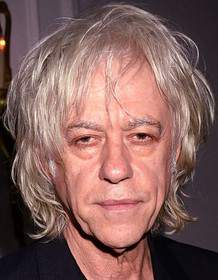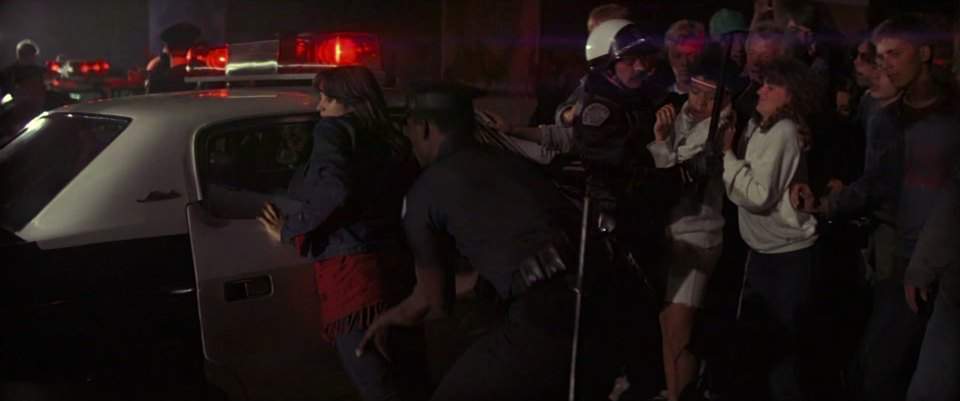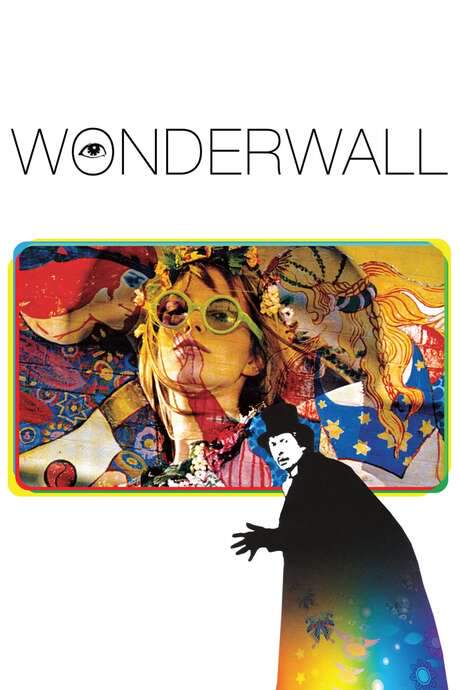Pink Floyd: The Wall 1982

Confined to a Los Angeles hotel room, a successful musician begins a descent into psychological turmoil, triggering a series of fragmented memories and surreal visions. He confronts a painful past marked by loss, isolation, and an overprotective mother, events that have led him to construct a metaphorical wall to protect himself. The film explores themes of trauma, grief, and the struggle for personal freedom through a combination of live-action and animation.
Does Pink Floyd: The Wall have end credit scenes?
No!
Pink Floyd: The Wall does not have end credit scenes. You can leave when the credits roll.
Meet the Full Cast and Actors of Pink Floyd: The Wall
Explore the complete cast of Pink Floyd: The Wall, including both lead and supporting actors. Learn who plays each character, discover their past roles and achievements, and find out what makes this ensemble cast stand out in the world of film and television.
External Links and Streaming Options
Discover where to watch Pink Floyd: The Wall online, including streaming platforms, rental options, and official sources. Compare reviews, ratings, and in-depth movie information across sites like IMDb, TMDb, Wikipedia or Rotten Tomatoes.
Ratings and Reviews for Pink Floyd: The Wall
See how Pink Floyd: The Wall is rated across major platforms like IMDb, Metacritic, and TMDb. Compare audience scores and critic reviews to understand where Pink Floyd: The Wall stands among top-rated movies in its genre.

47
Metascore
8.4
User Score


%
TOMATOMETER

0%
User Score

8.0 /10
IMDb Rating

80
%
User Score
Take the Ultimate Pink Floyd: The Wall Movie Quiz
Challenge your knowledge of Pink Floyd: The Wall with this fun and interactive movie quiz. Test yourself on key plot points, iconic characters, hidden details, and memorable moments to see how well you really know the film.
Behind the Wall: A Quiz on Pink Floyd's The Wall: Test your knowledge on the symbolism and narrative of Pink Floyd's iconic film, The Wall.
Who plays the character of Pink in the film?
Roger Waters
Bob Geldof
David Gilmour
Syd Barrett
Show hint
Awards & Nominations for Pink Floyd: The Wall
Discover all the awards and nominations received by Pink Floyd: The Wall, from Oscars to film festival honors. Learn how Pink Floyd: The Wall and its cast and crew have been recognized by critics and the industry alike.
36th British Academy Film Awards 1983
Best Original Song
Best Sound
Full Plot Summary and Ending Explained for Pink Floyd: The Wall
Read the complete plot summary of Pink Floyd: The Wall, including all major events, twists, and the full ending explained in detail. Explore key characters, themes, hidden meanings, and everything you need to understand the story from beginning to end.
The film narrates the construction and eventual demolition of a symbolic wall, evoking themes of isolation and alienation that can be interpreted in various ways. The protagonist, Pink, portrayed by Bob Geldof, is depicted as a rock star struggling with his emotional detachment and depressive state. The story opens in a hotel room that he has turned upside down, set to the haunting melody of Vera Lynn’s “The Little Boy that Santa Claus Forgot” rather than music by Pink Floyd.
As the narrative unfolds, we learn about Pink’s deeply troubled past. His father, a British soldier, was killed in World War II when Pink was just an infant, which echoes the real-life loss experienced by Roger Waters, whose own father died in battle. The stark imagery of modern rock concerts is jarringly compared to soldiers rushing into combat, portraying a chaotic world.
The film flashes back to Pink’s childhood in the 1950s, where he grapples with the absence of a father figure, crying out for connection (“Another Brick in the Wall, Part I”). He discovers memorabilia from his father’s military service, including a bullet that he dramatically places on the track of an approaching train, symbolizing his deep sense of loss. At school, he faces humiliation when caught writing poetry—poems that his abusive teacher reads aloud (“The Happiest Days of Our Lives”). This oppressive school environment sparks a vivid fantasy in which the students rise against their tormentor, leading to the destruction of the school itself (“Another Brick in the Wall (Part 2)”). Additionally, Pink’s overbearing mother, portrayed with gravitas, further complicates his emotional landscape (“Mother”).
As an adult, Pink marries, yet they drift apart due to his increasingly self-destructive behavior. On tour in the United States, he discovers that his wife is being unfaithful, which drives him into the arms of a willing groupie, portrayed by Jenny Wright. This encounter ends violently, culminating in a harrowing display of emotional turmoil when Pink shatters his hotel room in a fit of rage (“One of My Turns”). As despair grips him (“Don’t Leave Me Now”), he lashes out at his television with his guitar, declaring he needs “no one at all” (“Another Brick in the Wall, Part III”), marking the completion of the wall he has built around himself to shield from emotional pain (“Goodbye Cruel World”).
In a harrowing descent, Pink loses his sanity, depicted metaphorically as “worms” invade his mind. He finds himself transforming into a disturbing neo-Nazi alter-ego while watching The Dam Busters (1955). His manager, Bob Hoskins, along with some hotel staff, break into his room and forcefully sedate him for a performance (“Comfortably Numb”).
In a disturbing fantasy sequence, Pink imagines himself as a dictator at a neo-Nazi rally, targeting those he perceives as different (“In the Flesh”). The chaos escalates as violence erupts, culminating in a rally set in suburban London, interspersed with animated imagery of marching hammers through the ruins (“Run Like Hell,” “Waiting for the Worms”). Eventually, Pink’s hallucinations shatter, leading him to seek refuge in a bathroom stall while reciting poetic lines that would later become lyrics for Pink Floyd’s work.
In a striking and surreal climax, Pink stands trial (“The Trial”), depicted as a small, immobile pink doll before a comically grotesque judge. The proceedings involve a slew of witnesses, including his mother and wife, who represent the emotional baggage weighing him down. Ultimately, the judge orders the wall to be destroyed. In a dramatic explosion, the wall blasts apart, revealing a montage of the film’s events, culminating in Pink’s anguished scream. The film concludes with three children tasked with cleaning up the aftermath of turmoil, leaving the fate of Pink shrouded in mystery and inviting viewers to reflect on his journey and its implications.
Uncover the Details: Timeline, Characters, Themes, and Beyond!

Coming soon on iOS and Android
The Plot Explained Mobile App
From blockbusters to hidden gems — dive into movie stories anytime, anywhere. Save your favorites, discover plots faster, and never miss a twist again.
Sign up to be the first to know when we launch. Your email stays private — always.
Watch Trailers, Clips & Behind-the-Scenes for Pink Floyd: The Wall
Watch official trailers, exclusive clips, cast interviews, and behind-the-scenes footage from Pink Floyd: The Wall. Dive deeper into the making of the film, its standout moments, and key production insights.
Cars Featured in Pink Floyd: The Wall
Explore all cars featured in Pink Floyd: The Wall, including their makes, models, scenes they appear in, and their significance to the plot. A must-read for car enthusiasts and movie buffs alike.
Pink Floyd: The Wall Themes and Keywords
Discover the central themes, ideas, and keywords that define the movie’s story, tone, and message. Analyze the film’s deeper meanings, genre influences, and recurring concepts.
Pink Floyd: The Wall Other Names and Titles
Explore the various alternative titles, translations, and other names used for Pink Floyd: The Wall across different regions and languages. Understand how the film is marketed and recognized worldwide.
Similar Movies To Pink Floyd: The Wall You Should Know About
Browse a curated list of movies similar in genre, tone, characters, or story structure. Discover new titles like the one you're watching, perfect for fans of related plots, vibes, or cinematic styles.
Quick Links: Summary, Cast, Ratings, More

What's After the Movie?
Not sure whether to stay after the credits? Find out!
Explore Our Movie Platform
New Movie Releases (2025)
Famous Movie Actors
Top Film Production Studios
Movie Plot Summaries & Endings
Major Movie Awards & Winners
Best Concert Films & Music Documentaries
Movie Collections and Curated Lists
© 2025 What's After the Movie. All rights reserved.













































